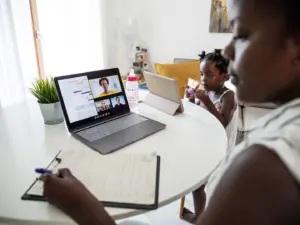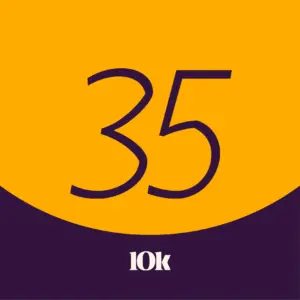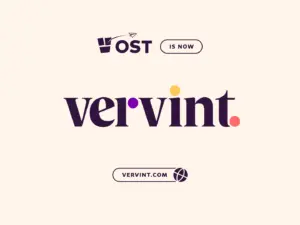When the COVID-19 quarantine began in early 2020, many of us had to quickly adjust our everyday life. Organizations also had to rethink, reimagine, and rewrite the rules of the workplace. Work environments became remote, transforming the employee experience from interviewees and new hires to current personnel. Along with many other successful organizations, Vervint was able to shift to a remote workforce, provide flexibility and maintain our people-first culture.
One of the main ways that we have maintained our unique culture remotely is through modifying the interviewing and onboarding process. We understood there were unique challenges with acquiring and onboarding new talent during a pandemic — but we also recognized new opportunities.
In this article, we will explore how we have successfully onboarded highly technical roles like developers. And we’ll do that question-and-answer style by looking at the process through a variety of perspectives. We interviewed Hannah Staal and Tori Dean from our Talent Experience Team, Jesse David, and Sabrina Brooks (who went through virtual onboarding) as well as Jon Vinsko and Kyle Jansens, long-time members of our Configuration Services Team.
Shifting to a Virtual Interview Process
How is the Vervintculture highlighted without directly interviewing in person or in the physical office space?
Every company has a personality. At Vervint our positive energy is contagious—open and approachable. Our collaborative office environment helps shape our personality, and our captivating culture makes us who we are. Our office helps tell our story, but in times of remote working and virtual interviews we have been able to tell our story through our culture. As Hannah explained, “we honor our people and their families first, offering a flexible work environment no matter the working location: remote or in-office.” We create an environment of continuous personal and professional growth by offering professional development opportunities, open invitations to join committees and other support that goes beyond the job. Examples include:
- Mental health and stress reduction workshops
- Virtual home school consultations
- Flexible work schedules
- Virtual events and contests
Our culture is ingrained in who we are as an organization. And no matter the physical space we’re in, our culture will continue to be our greatest asset for attracting and retaining expert talent.
How did the interview process change with a fully remote workplace?
During face-to-face interviews, candidates rely partially on interpersonal skills and non-verbal communication cues to show why they would be a great candidate for the position. But virtual interviews and an interview process that doesn’t include visiting the office can limit both demonstrating and understanding those types of communication.
As Jesse and Sabrina explained, “for a fully remote video interview, we felt the need to prepare more than normal.” They wanted to ensure they could verbalize their skill sets and how well they understood Vervint’s business, needs and culture from their job hunt research. Both admitted that they tailored questions differently and asked more questions during their interviews to get a better sense of the team, work culture and how well they would fit in.

A Few Things We’ve Learned Working Through Quarantine
Adapting the Onboarding Process
How did the onboarding process change with a fully remote workplace?
As one of Vervint’s talent experience consultants, Tori has ensured that Vervint has been even more intentional about creating a positive virtual onboarding experience for new employees. “We had to think creatively to make remote onboarding as meaningful as it is in-person,” Tori explained. “To begin with, we started mailing a welcome surprise package to each new employee to make them feel special even before their first day. We also send gift cards to new employees so their first-day lunch can still be on Vervint.” In addition to these efforts, new hires proactively get team lunches, happy hours and get-to-know-you meetings scheduled during their first few weeks by the talent experience team. Tori also highlighted a few of the other features that Vervint has incorporated into the process: “We have an onboarding buddy program that connects a peer on the new employee’s team as a go-to for questions, concerns, and open conversation. Plus, we schedule frequent one-on-one meetings and touchpoints to make up for the lack of natural run-ins that tend to happen in the collaborative office environment.”
How do we make someone feel welcome on their first day while in their home office?
Tori also outlined what a new hire could expect on their very first virtual day with Vervint. A welcoming first day at Vervint starts with consistent communication leading up to that day and setting expectations for a new hire’s first-day experience. “We spend time making sure the new employee knows what to expect and has some certainty, especially during this pandemic when just about everything feels uncertain,” Tori said. Each new employee receives communication from our talent team that shares their first-day agenda, introduces them to their onboarding buddy and coordinates a virtual first-day lunch with their team. Every new Vervint employee is also welcomed with a shoutout on our general Slack channel, and Vervint publishes a welcome bio on our company intranet.

35: Remote Onboarding
Transforming Technical Training
How did technical training change during quarantine?
Kyle and Jon are usually heavily involved in training new developers, and they weren’t sure how they would be able to recreate the hands-on experience virtually. “Initially, we thought technical training would require a complete overhaul, but we quickly realized communication was the key to succeeding.” Configuration management (CM) development and program training has been a unique challenge that forced our Vervint mentors to examine how to train employees in-between Configura’s scheduled developer trainings. As Kyle and Jon explained, “in the past, being together in the office made it easy to keep a constant check-up on new employees. We were able to visibly recognize challenges, walk up to a new employee’s desk, ask how they were doing and if they were stuck on anything. In quarantine, we had to not only update and revise the learning process but replicate the availability of mentors in the office.”
Jesse and Sabrina described how they had to adapt as well: “As new employees working remotely, we did not have the option to turn to our neighbor or walk to someone’s desk to seek help. To effectively make it through technical training, we had to ask meaningful questions and schedule meetings.”
Ultimately, communication from both mentors and new hires was a necessary component for developer success at Vervint in a remote environment. And the team has continued to grow and refine their onboarding to build on their success. For example, Jesse and Sabrina found a lot of value in paired programming sessions: “The opportunity to use paired programming encouraged a different mindset for learning and developing.”
How do we ensure the excellence required by a specialized department like Configuration Services?
Kyle and Jon emphasized how “mentorship on the Configuration Services Team doesn’t end when technical training is done. As mentors, we frequently examine the code of new developers, provide feedback, and implement other tools to guarantee all code standards are met on every project.

OST is Now Vervint
Building Team Relationships
How have our developers fostered team-building virtually?
Everyone across teams mentioned that it was important to build meaningful connections within the Configuration Services Team. In addition to the intentional onboarding activities the Talent Experience Team set up, the Configuration Services Team began having weekly team gatherings, including coffee sessions and happy hours. Mentors even set up all-day virtual meetings to simulate being together in person. These meetings helped encourage open communication and foster team building that would ordinarily happen in the office.
How was knowledge-sharing encouraged without the ability to look over someone’s shoulder?
Knowledge-sharing was made a priority among the Configuration Services Team. Kyle, Jesse, Jon, and Sabrina outlined several ways the team communicated and connected:
- Slack channels were used for open communication, questions, and brainstorming.
- Pair programming brought together a senior developer and a new developer to guide them through configuration management (CM) programming. This provided a valuable learning opportunity during the onboarding process and beyond.
- A weekly “open office” meeting allowed teammates to virtually help each other resolve difficult issues as well as share new developments.
Vervint: Your Partner for Product Configurators
Throughout the pandemic, our teams have quickly pivoted and adapted to continue delivering value, both internally and with our clients. And our team of experts will help drive new revenue for your organization whether we are working remotely or in-office. To learn more, contact us today!
